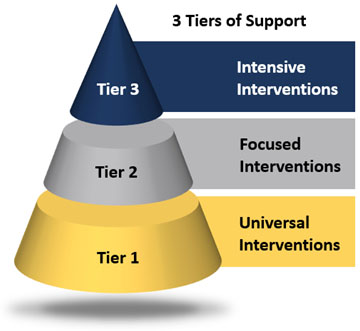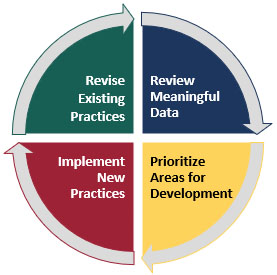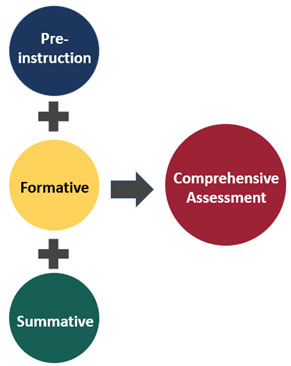(View ASL)
Each of the Atlantic Provinces applies a tiered system of support within their program planning structure. Responsive Teaching & Learning supports learner needs by identifying priorities which are supported through a tiered system of support. This instructional framework is used by the APSEA Service Delivery Team to develop and implement instructional practices, supports and programs that are culturally and linguistically responsive, flexible, and appropriate to the learner’s strengths and needs.
This tiered system of support allows for learner movement between tiers. Progress is monitored closely and collaborative decisions about instructional needs are based on data collected through comprehensive assessment by both the APSEA Service Delivery Team and School-based Education Team. Appropriate APSEA programs and support are identified and developed through a collaborative, culturally and linguistically responsive process. As part of the School-based Education Team, the APSEA Service Delivery Team purposefully engages to empower families to inform their understanding and guide decisions around appropriate programming and supports for their child.

Universal –Tier 1 interventions and supports provide the foundation where classroom instructional practices enable 80-90 percent of learners to be successful without further intervention. Tier 1 instructional practices and interventions are universal and available to all learners as part of the common learning environment. Such practices may include providing Universal Design for Learning principles that benefit students who are BVI and/or DHH along with others, supporting the implementation of accommodations in a student’s learning environment, consultation with members of the School-based Education Team, classroom observations and information gathering.
Focused – Tier 2 interventions offer provisional, small group support with specific learning outcomes. These intervention opportunities build on the Tier 1 interventions by providing focused small group learning opportunities based on learner needs and progress. Tier 2 interventions are provided in a responsive and flexible manner across fluid learning environments by members of the APSEA Service Delivery Team and/or the School-based Education Team.
Intensive – Tier 3 interventions provide programs and supports that are intensive, individualized, evidence-informed and based on the learner’s strengths and needs. Tier 3 interventions are also provided in a responsive and flexible manner across fluid learning environments by members of the APSEA Service Delivery Team and/or the School-based Education Team. These interventions can be offered within a small group and/or individualized instructional environment and extend beyond the time and intensity allocated for Tier 1 and Tier 2.
Progress Monitoring
The APSEA Service Delivery Team in collaboration with the School-based Education Team performs regular and ongoing progress monitoring which guides the Responsive Teaching and Learning process.

To begin this process, these Teams review meaningful data as it relates to the learner’s development and achievement. In collaboration with one another, the Teams then prioritize areas for the learner’s further development. To support these identified areas, the Teams develop strategies, and coordinate programs and resources for the learner and the Teams. These new strategies and programs are then implemented which will lead the Teams to repeat the process after an agreed upon timeframe. Program planning timelines and dates established by the district/region/board are observed and guide this process.
Comprehensive Assessment

Assessment serves a variety of purposes at different times of the learner’s progress. A comprehensive assessment consists of pre-instruction, formative, and summative assessments.
Pre-instruction assessment determines where teaching should begin and helps identify learner’s strengths and needs. This may include observation reports, writing samples, cumulative records, etc.
Formative assessment plays a vital role in the program planning process. Formative assessment is used to monitor learner improvement and development during the learning process; it is an assessment for and as learning. This process allows Teams to gather data during the teaching and learning process and inform learners of next steps. This allows Teams to adjust instruction and implement new strategies to help learner achievement and development. This may include checklists, work samples, graphic organizers, conferencing, informal observations, and working portfolio.
Summative assessment measures a learner’s ability, knowledge, or development at the end of a significant period of learning and summarizes learner achievement; it is an assessment of learning. This may include unit tests or quizzes, final portfolios, and standardized assessment tools.
When supporting the progress monitoring process, Teams will consider which aspects of a comprehensive assessment are necessary to best guide the decisions for the learner’s future programming needs.